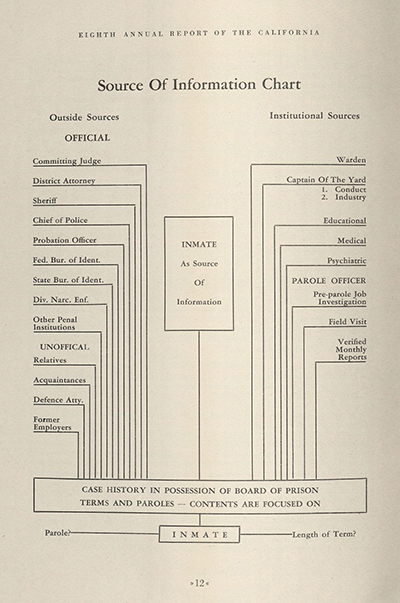Loudon and Latham: Records of the California Institution for Women at Tehachapi in the 1930s
September 24, 2024
Lotus H. Loudon was a newspaper publisher and member of the board of directors and paroles of the California Institution for Women at Tehachapi in the 1930s and early 1940s. The Lotus H. Loudon Collection includes correspondence, notes, reports, and other records documenting the operation of the prison, and Loudon's term as a member of the board of directors and paroles.  The documents also highlight the work of State Parole Officer Emily D. Latham, and provide insight into attitudes towards crime and women during this time period.
The documents also highlight the work of State Parole Officer Emily D. Latham, and provide insight into attitudes towards crime and women during this time period.
The prison originally opened in 1932 as the Women's Department at San Quentin, Tehachapi, and would later be referred to as Tehachapi Women's Prison. Lotus H. Loudon was appointed Chairman of the Board of Directors of the California Institute for Women (CIW) in December 1937 and served for seven years in the role. Loudon grew up in Whittier and attended the University of Southern California. He got his start in the newspaper business as a printer on the Whittier News, then as a makeup printer at the Los Angeles Chronicle, before becoming business manager of an Ocean Park daily. Loudon established the Anaheim Bulletin after he and his wife Hazel Del Baker moved to Anaheim.
The original correspondence in the collection is primarily related to Loudon's appointment to the position and the advocacy of friends and family on behalf of specific women seeking parole. Operational records include those that relate to personnel, such as applications for work, prison statistics, budget reports, and institutional rules. These document how much it cost to operate CIW, who was employed there, and rules for those paroled. Rules for women paroled from the prison included not driving an automobile, obtaining written consent to change jobs or residences, an order not go into places selling liquor, to not do public speaking, not actively affiliate with any political party, and not associate with others recently or currently jailed. Women were required to regularly report to the CIW State Parole Officer.
 Parole reports were primarily created by State Parole Officer Emily D. Latham and document what work was like for a parole officer in the 1930s and early 1940s. Latham's detailed parole reports provide a human view on what could otherwise be a list of statistics. Latham wrote specific details on individuals, including the crimes that they were convicted for, and details on their lives following incarceration at CIW, and challenges they faced while on parole. Her reports document the places she visited, with lists showing how much she traveled across the state. She also handled requests for women on parole to travel outside of their parole county, to change jobs, and helped them connect with resources.
Parole reports were primarily created by State Parole Officer Emily D. Latham and document what work was like for a parole officer in the 1930s and early 1940s. Latham's detailed parole reports provide a human view on what could otherwise be a list of statistics. Latham wrote specific details on individuals, including the crimes that they were convicted for, and details on their lives following incarceration at CIW, and challenges they faced while on parole. Her reports document the places she visited, with lists showing how much she traveled across the state. She also handled requests for women on parole to travel outside of their parole county, to change jobs, and helped them connect with resources.
As a delegate to the National Parole Conference in 1939, she worked with other attendees to create “A Declaration of the Principles of Parole.” The declaration included the statement that the “paroling authority should be impartial, non-political, professional competent, and able to give the time necessary for full consideration of each case.” It also stated that imprisonment “should be used to prepare the individual vocationally, physically, mentally, and spiritually for return to society.” These tenets are clearly reflected in Latham’s parole reports.
Image Gallery
Post tagged as: urban archives, archives, ephemera, california
Read more Peek in the Stacks blog entries
















